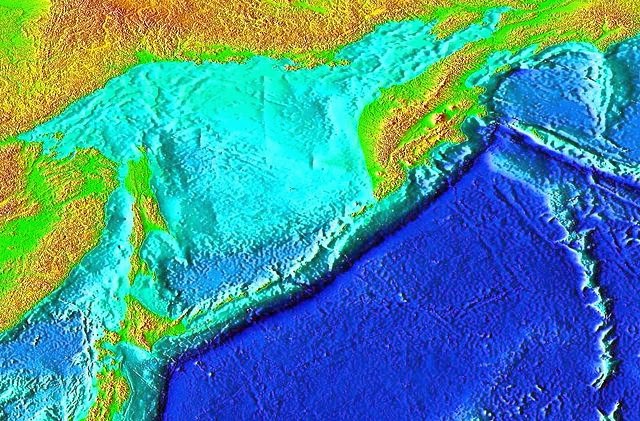Nobody's (Super)Fault But Mine?
This is a deep article. Well, the topic is hundreds of miles deep. Specifically, the powerful earthquake in the Pacific Ocean near Kamchatka in May, 2013. Scientists speculate that faults at such depths are caused by a sequence of events, including frictional melting and cold plate subduction, leading to out-of-control expansion of ruptures and subduction.
The earthquake was powerful and huge, with a tremendous velocity in the rupture itself. The details of this quake support models and papers by Drs. Tim Clarey, Steve Austin and John Baumgardner. What is seen is strong evidence for superfaults in the global Noachian Flood!
 |
| NOAA.gov / Wikimedia Commons / PD |
A magnitude 8.3 earthquake recently struck deep below the Sea of Okhotsk in the Kuril-Kamchatka subduction zone just south of the Russian Kamchatka Peninsula and 950 miles north of Japan. It ruptured along a 110-mile-long fault about 378 miles below the surface where the Pacific Plate is being subducted, or pulled down, beneath the ocean crust. Though it’s been hailed as the largest deep earthquake ever recorded, the Okhotsk upheaval pales in comparison to the earthquake activity suspected during the great Flood. However, it does provide an excellent model of what may have transpired at the time of that catastrophic event long ago.
What perplexes scientists the most is the earthquake’s great depth. Publishing in the journal Science, Lingling Ye et al. noted, “The occurrence of earthquakes in the depth range from 400 to 720 km [250 to 450 miles] (the mantle transition zone) has long been enigmatic, given the immense pressure exerted by the overlying rock mass on any fault surface.”You can get shaking over to "Runaway Subduction and Deep Catastrophic Earthquakes".